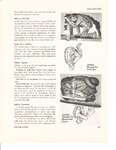Swede Ware
Airman
If you have ever seen a shot of the nose wheel retracted, you would have to go out of your way to get under it to the doors. I do know there was a quick release for the nose gear that would jettison the entire system and clear it for use for bailing out.The access to the nose wheel compartment is under, and back of the navigator's table, I don't see how anyone could step on the nose wheel doors by accident.
You had to crawl under that table to get out.
Maybe every model of the B-24 doesn't have the same internal layout.
Could that forward escape be used if the nose wheel was down ?
.

 I've never heard of that - do you have a reference? Maybe Gary (GEEDEE) has some information, he flies on "Witchcraft."
I've never heard of that - do you have a reference? Maybe Gary (GEEDEE) has some information, he flies on "Witchcraft."